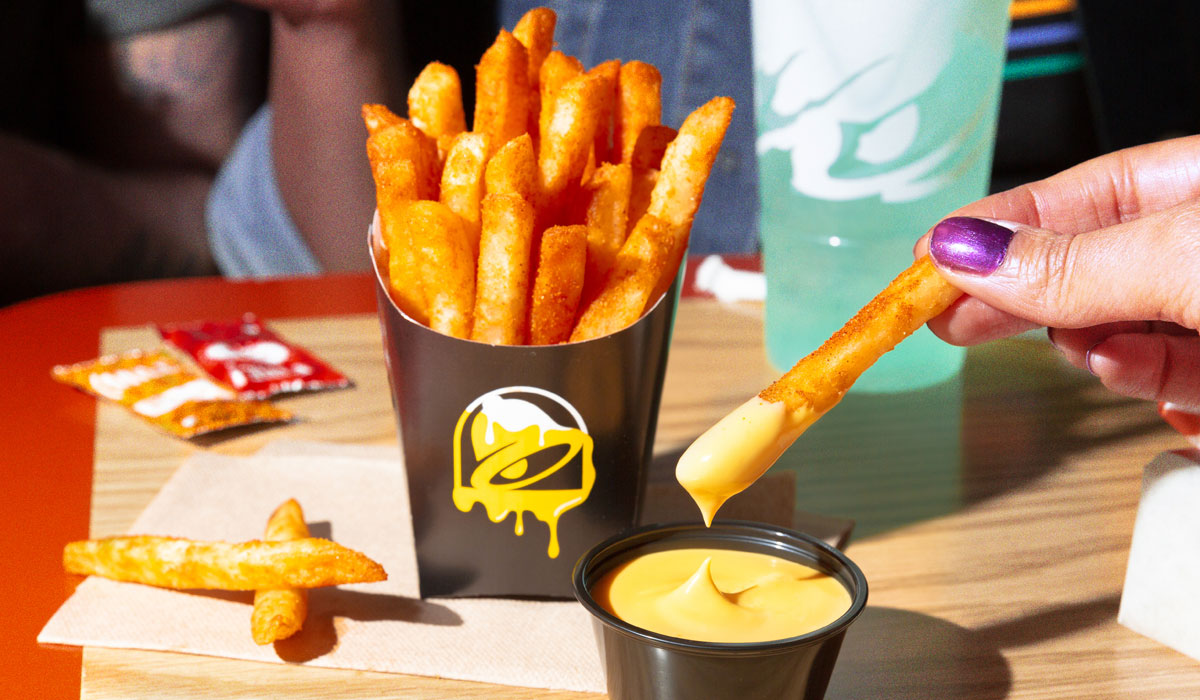Looking further into Yum! Brands’ record-breaking $22 billion in digital sales last year, there really isn’t one overwhelming driver, said CFO Chris Turner.
Strength comes from all four brands (KFC, Taco Bell, Pizza Hut, Habit Burger Grill) and all channels. The company finished the year with more than 45,000 restaurants offering delivery, representing more than a 25 percent lift year-over-year. Carryout also expanded, with more customers using Yum!’s “Click and Collect” online platforms. Even inside dining rooms, restaurants have seen growth in the kiosk business, especially at Taco Bell.
Yum!’s $22 billion benchmark was up from $17 billion in 2020. In the fourth quarter alone, the company earned more than $6 billion in digital sales.
“As we said before, COVID accelerated those trends and we’re glad that we were in a great position to be able to capitalize on it,” CFO Chris Turner said during Yum!’s fourth quarter and 2021 earnings call. “But whenever you nearly double your digital sales in two years, I think that’s evidence that those investments are paying off.”
“And of course, our franchisees are co-investing with us to help make that happen, but they’re doing that because they’re seeing strong returns from those investments in their business, as well,” he continued. “So, I think the overall story is, we’re getting a strong return, and we’re very pleased with the digital results, and we’re going to continue to drive that.”
KFC U.S.’s digital sales soared 70 percent year-over-year in 2021, driven by its delivery service channel and e-commerce platform that launched nationwide early last year. In Q4, the brand rolled out Quick Pick-Up, in which customers can skip the drive-thru and grab mobile orders out of cubbies inside the restaurant.
At Taco Bell, the focus continues to be drive-thru. The channel was two seconds faster year-over-year in Q4, marking the eighth straight quarter of an average time under four minutes—an impressive feat, considering ongoing labor challenges and spikes of Omicron cases.
READ MORE: Yum! Brands Soars to Best Development Year in Restaurant History
In August, the brand revealed its ambitious Defy concept—a 3,000-square-foot restaurant featuring four drive-thru lanes, including one traditional lane and three for mobile orders or delivery pickups. The new store, scheduled to open in Brooklyn Park, Minnesota, this summer, also has digital check-in screens allowing customers to scan a QR code and receive food via a “bell-evator” lift system.
Taco Bell’s digital channels crossed $1 billion in 2020. The chain’s rewards program rolled out in July 2020, and by the one-year anniversary, app sales increased 90 percent and sign-ups for the program grew 5x more than the first month. To elevate Taco Bell Rewards even further, the brand launched Taco Lovers Pass, a new subscription program giving customers the opportunity to pay $10 to get a free taco every day in a 30-day period.
The chain’s digital mix is 40 percent internationally and approaching 20 percent in the U.S.
“Clearly, those strong digital numbers come as a result of the investments we’ve been making and our strategy around digital because we knew this was the future of the industry,” Turner said.
The acceleration is fueled by strategies aimed at elevating customer and employee experiences.
For example, in Pizza Hut’s international markets, Yum! continued the rollout of HutBot, a coaching app helping restaurants achieve operational objectives. At the end of 2021, the tech was live in more than 6,000 Pizza Hut locations in 70 markets.
Additionally, all of Yum!’s recent technological acquisitions have made an impact.
Kvantum, an AI-based consumer insights and marketing performance analytics business, operated in 13 markets when Yum! acquired it in Q1, but that has now tripled to more than 45 areas. Dragontail Systems Limited, a company that streamlines end-to-end food preparation and optimizes delivery routes, is live in 2,800 restaurants in 21 markets across KFC and Pizza Hut, an increase from 13 markets in Q3 and nine markets at the end of 2020.
Also, Tictuk Technologies, a solution that offers more ways to order through social media and chat channels, expanded to almost 2,000 stores by the end of 2021, a 60 percent increase since Yum! purchased it in Q1.
“The impressive adoption rates of these technology platforms are evidence of our franchisees’ confidence and the investments we made to advance our digital and technology ecosystem this year,” Turner said. “We’re confident these investments have created a meaningful competitive advantage and will be a point of differentiation for YUM as we serve the elevated expectations of customers.”







